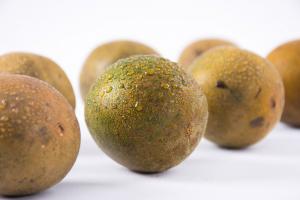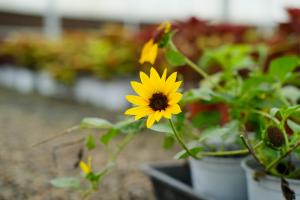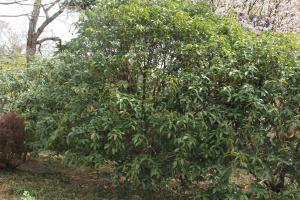Grab a handful of eggshells and throw them into the basin. The leaves are as strong as steel buds
Huahua began to eat two eggs for breakfast every day since she was a child. Over the years, there are a lot of egg shells left. Don't lose these egg shells. They are all good things for raising flowers

Operation steps:
1. Wash the egg shells collected at home, expose them to the sun for 3-5 days, dry them, and then grind them into small pieces

2. If you don't think the sun is enough in winter and it's too troublesome to dry, you can also put the egg shell in a plastic bag and dry it in the microwave oven, or grind it and stir fry it a little in a frying pan

3. When changing pots for flowers, you can directly mix egg shells into the soil and use them as nutrient soil! Because the egg shell belongs to calcium fertilizer, it can make the flower stem at home stronger

4. It's cold in winter. The flowers at home can't change the basin at all. We can grab a handful of crushed egg shells and sprinkle them on the basin surface. When watering, let the nutrients of egg shells penetrate into the soil and supplement nutrients

Applicable flowers: egg shells can be used for most flowers at home, such as longevity, crab claw orchid and gardenia, but blueberries don't seem to like egg shells very much. Please pay attention not to use them
Throw a pound of walnuts into the basin, and the leaves are green enough to emit oil
The most comfortable thing in winter must be to eat dried fruits at home and watch TV dramas! In particular, we can eat more walnuts for brain tonifying. In fact, not only we, but also the flowers at home like walnuts

Operation steps:
1. Smash walnuts with their skins with a small hammer at home. Some flower friends buy walnuts directly. Huahua suggests using moldy walnuts. After all, it's too painful to feed good walnuts to flowers

2. It's cold in winter and you can't change pots for flowers, so just sprinkle a layer of crushed walnuts on the basin surface

3. Low temperature in winter will not attract small insects. Walnuts decompose slowly on the basin to release nutrients, supplement oil crops for flowers and make leaves greener and brighter

4. If you are worried that it is too dangerous to throw walnuts directly on the basin, use walnuts as waist fat in a very safe way. Dig a circle 3-5cm from the basin surface, put the smashed walnuts directly into it, and then bury them in the soil. Be careful that the walnuts do not contact the root system

5. If you finish eating walnuts at home and only have shells left, you can also collect the walnut shells and place 2-3cm thick pads at the bottom of the basin when changing the pots for flowers. Because the gap between walnut shells is relatively large, so the drainage is good. Don't worry about rotten roots

Applicable flowers: walnuts contain a lot of oil, so for flowers like oil crops such as Clivia and orchid, walnuts are a great fertilizer
Grab a handful of cinder and mix it into the basin. The longer and stronger the root system is
Although it can't be found in many places when it comes to cinders, many roadside vendors still use honeycomb briquette. You can go there and order some. Of course, if you can find it in the trash can

Operation steps:
1. Smash it with a small wooden stick, or crush the honeycomb briquette with your feet, and then throw it into water for 1-2 days. Because honeycomb briquette contains too much alkalinity, it will burn roots if you directly raise flowers

2. After soaking and removing the alkalinity, screen the cinders and throw away the black ones directly. Don't separate the large particles from the small ones

3. After drying the cinder, you can use it to raise flowers! Those cinders with slightly smaller particles can be mixed with the soil and used as nutrient soil

4. Those cinders with large particles can be directly screened out and placed at the bottom of the basin when changing the basin! Because the gap between large particles of coal cinder is relatively large, the cushion at the bottom of the basin can be loose and breathable to prevent flowers from rotting roots

Applicable flowers: for example, the green pineapple, Chlorophytum and fortune tree at home can be raised with cinder
Grab a tomato and bury it in the soil. The flowers will never be yellow again
Speaking of tomato flower cultivation, are many flower friends a little shocked? How can this thing be used to grow flowers? Don't say, tomato flowers are also good fertilizer! If you don't believe it, follow Huahua

Operation steps:
1. Home tomatoes, whether large tomatoes or small virgin fruits, can be used as fertilizer

2. The simplest way is to mix the tomatoes directly into the garden soil and wrap them in plastic bags for sealing. Generally, in about one month, the tomatoes can be completely rotten and turned into fertilizer

3. Of course, you also choose to chop the tomatoes, put them directly into the bottle, and then add some rice washing water to seal them for fermentation. Occasionally, open the cover for ventilation. After retting into liquid fertilizer from January to February, you can add water to water the flowers

4. Tomatoes are rich in vitamins, phosphorus, potassium and other trace elements, which can not only supplement nutrients for flowers, but also improve soil pH, make the soil weak acidic, and make the flowers no longer yellow leaves

Applicable flowers: tomato fertilizer can be used for acid loving flowers such as gardenia, jasmine and Camellia

 how many times do yo...
how many times do yo... how many planted tre...
how many planted tre... how many pine trees ...
how many pine trees ... how many pecan trees...
how many pecan trees... how many plants comp...
how many plants comp... how many plants can ...
how many plants can ... how many plants and ...
how many plants and ... how many pepper plan...
how many pepper plan...






























